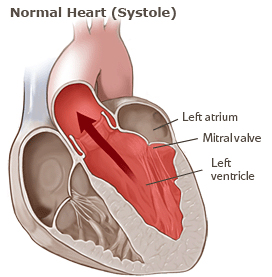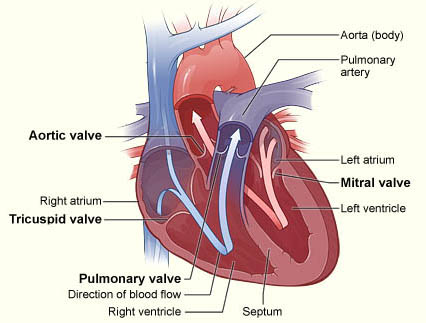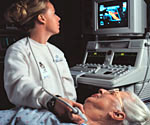

Further Reading
What is Echocardiography? American Heart Association
How Can I Live With Heart Failure? American Heart Association
What is Atrial Fibrillation? American Heart Association
What is Congestive Heart Failure? American Heart Association
The heart is a muscular organ that pumps blood through the circulatory pathway of the arteries and veins. When the blood is pumped from the heart to the rest of the system it is called systole. When the blood returns to the ventricles of the heart this is called diastole. Because the heart is made up of muscle cells that are elastic the blood can move into and out of the heart easily.
The normal heart has the elasticity necessary for the heart to fill efficiently. Aging and most diseases of the heart affect the ability of the heart to relax and fill properly because the muscles become stiffer. In most of these cases the basic units of the heart, the muscle cells, die and are replaced by cells that are not elastic. This loss of elasticity causes stiffening of the heart and is a progressive process. This is known as diastolic dysfunction. When this happens it causes a decrease in the function and efficiency of the heart and the heart cannot fill completely. When the heart cannot fill completely it cannot pump enough blood to the rest of the body. If diastolic dysfunction is left untreated the pressure in the heart will raise high enough to prevent complete filling which decreases the output of the heart. This progressive change can lead to a life threatening condition called heart failure.
Diastolic dysfunction can be caused by aging or a disease process such as hypertension, coronary artery disease, obesity, diabetes as well as other diseases. These conditions can hasten the stiffening in the heart muscle. There are treatments that can slow the process of stiffening as well as reduce pressure elevation. If treatment is instituted early enough it will slow the progression toward heart failure or stop it altogether. For some people once the stiffening has begun, if treated, it can be reversed.


The best method of detecting these stiffening changes is with an ultrasound machine, a sensitive tool that probes the heart for these stiffening properties. This test is done by a trained technician and interpreted by a cardiologist. If stiffening is detected there are treatments to slow, stop or potentially reverse progression of these changes in the heart.
Treating the cause of the stiffening of heart can
be as simple as losing weight if one is obese, or treating hypertension
in order to keep blood pressure at specific levels. There are also medications
that have been shown to protect the heart from cell death thereby altering
the progression of the stiffening of the heart.


Many people are in the early stages of heart failure and neither they nor their physician know this because at this stage the person does not have symptoms. If caught early enough when there are no symptoms there is a better chance of preventing the progression to heart failure. If you have a disease of the heart or one that affects the heart such as diabetes, hypertension, obesity, or coronary artery disease your physician is able to order tests to detect the stiffening of the heart muscles. Once tested if there is evidence of heart stiffening, diastolic dysfunction, your physician can plan a therapy program to halt or delay the process of heart failure.
You may want to talk with your doctor to have an echocardiogram, the ultrasound test to measure the elasticity of your heart. As is said, prevention is the best medicine.
